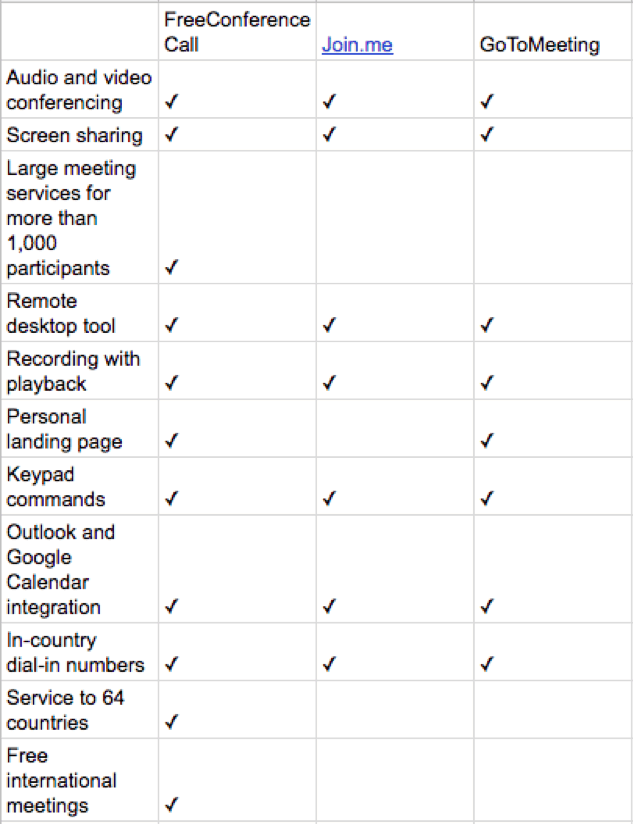International video conferencing has many cultural differences you’ll have to overcome to have a successful call. We’ve come up with seven steps to having a successful international conference call without fail. Read further to find out how you can improve your international video conferencing habits and ensure you come off as a professional no matter where your participants are from.
- Decide which type of virtual meeting you want to hold
- Develop an agenda and prepare for the meeting
- Determine a time and day for the meeting to be held
- Use the best international meeting hosting service for you
- Invite participants to attend the meeting
- Conduct the meeting efficiently and encourage participation from all attendees
- Follow-up after the meeting
While hosting an international meeting may sound simple enough, it’s easy to underestimate the amount of thought and preparation that a successful international meeting requires. Here, we’ll show you how to have a successful international meeting and conference call from start to finish.
1. What Types of Virtual International Meetings Can You Have?
The first thing you’ll need to do before you begin preparing for your international meeting is decide which type of international meeting you want to hold. There are several options for the types of virtual international meetings you can have:
- Audio meetings, including phone conferences and online audio conferences.
- Video meetings, including screen-sharing meetings and meetings where each participant is visible during the meeting.

The main advantage of audio meetings is that they’re easily accessible by all participants. Plus, with the help of a top-notch meeting hosting service, audio quality can remain reliable. However, the disadvantage of offering only verbal communication is that participants can’t see one another’s facial expressions and body language. This issue is compounded with cultural differences.
The main advantage of video meetings is that they allow participants to communicate verbally as well as non-verbally. On the other hand, the quality of video meetings is often dependent on each participant’s network connection, which can vary from location to location. This is especially important to consider when it comes to international meetings.
Both audio and video meetings can be significantly improved with the help of a virtual meeting room, which can provide attendees with additional information.
2. How Should You Prepare for an International Meeting?
Before you start deciding who should attend the meeting, you’ll need to do a fair amount of preparation.
First, consider what will be discussed at the meeting. Although you may have a general idea, you can make the most of the allotted time by creating a detailed agenda.
Here’s how to prepare for your international meeting. A complete agenda will include:
- A timeline of the organizational process, including who will be in charge of planning each aspect of the meeting.
- The main goal of the meeting.
- A list of participants, as well as who will be the primary moderator
- A list of topics, as well as the amount of time that you expect to dedicate to each topic.
- Additional materials that attendees will need to have access to, such as PowerPoint presentations, documents or data. You should also specify who will be presenting each piece of information.

3. When Should You Host an International Meeting?
Trying to determine the best time to host an international meeting can be an intimidating task. These are the steps you should use to make your decision:
- Look up holidays in all countries of participants
- Compare time zones for all participants
- Try to select a time in business hours
Start by researching major holidays in the countries of all involved participants. This can help rule out days that might seem perfect to you, but that would be inconvenient for international conference call attendees.

Next, compare the time zones of all the attendees. Try to find a few possible time slots that fall during normal business hours for everyone involved.
If that’s not possible, find time slots that fall during the daytime, even if that means some people will have to join the meeting early in the morning, while others will have to join it in the evening.
4. Where Should You Host Your International Meeting?
Although there are many meeting hosting platforms available, here are a few to consider when deciding where you will host your international meeting:
FreeConferenceCall.com offers free unlimited services and is used by more than 800,000 companies globally. Its services include HD audio conferencing, HD video conferencing, audio and visual recordings, screen sharing, calendar integrations, mobile apps and customized greetings. It was founded in 2001 and is headquartered in Long Beach, Calif.

Join.me offers both free and paid services, and is used by millions of people worldwide. Its services include audio and video conferencing, mobile apps, screen sharing, calendar integrations, mobile apps and personal links. It’s owned by LogMeIn, and is based in Boston, Mass.
GoToMeeting offers both free and paid services. Its services include audio conferencing, HD video conferencing, desktop and application sharing, personal meeting rooms and calendar integrations. It’s also owned by LogMeIn, and is based in Boston, Mass.
Here’s a comparison of some of the top international meeting services:

5. How Can You Make Sure That People Show Up to an International Meeting?
With virtual meetings, particularly international meetings attendees in with different time zones, it can be difficult to know if guests actually show up.
There are few tactics you can use to make sure that people show up to your international meeting:
Send invites: Even if you’ve invited participants personally, make sure to send them an official invite via email. This will make the meeting seem like an event that’s set in stone rather than just a suggestion. Email invitations will be even more effective if they include an option to enter the meeting on recipients’ calendars.
Send reminders: Since many participants can’t be reminded in person that there’s an upcoming meeting, it’s important to send out reminders the day before the meeting is scheduled to take place. Don’t forget to confirm the time and website (or call-in number) within the reminders.

6. How Should You Conduct an International Meeting?
Although a detailed agenda can help can an international meeting on track, there are additional things you can do to conduct the meeting as effectively as possible.
- Open early: To ensure that everyone can get settled as quickly as possible, open the meeting to participants 10 to 15 minutes early. Also designate someone to greet participants as they join.
- Break the ice: In the first five to 10 minutes of the meeting, break the ice and open up lines of communication by asking everyone questions. These questions should be kept brief and easy, and can touch on topics such as country-specific events and personal updates.
- Explain the meeting platform’s functionality: It’s important that each participant understands what the meeting platform will allow them to do–features can include chat boxes (which they can use to ask questions without interrupting the speaker), private messaging, keypad commands, remote desktop access and recording.
- Clearly announce new topics: As the meeting gets rolling, ensure that the moderator clearly announces the beginning of each new topic. This can help get everyone on the same page and keep the meeting moving along.
- Ask for perspectives: For each topic that’s covered, there will likely be a few of the meeting’s participants who are particularly affected by or knowledgeable about that topic. Be sure to specifically ask those participants for their perspectives and thoughts. Doing so will ensure that everyone will get an opportunity to speak and share valuable information.
- Reflect on each topic: As each topic is wrapped up, be sure to allocate adequate time to ensure that everyone understood the discussion and covered all the necessary points. Try asking follow-up questions, such as: Is there anything else that anyone wants to add before we move on? Is there anything that needs further clarification?
- End the meeting productively: After every item on the agenda has been covered and everyone has had a chance to speak, ensure that the meeting’s conclusion doesn’t leave any loose ends. To do this, ask participants if they’re clear on what’s going to happen going forward, and reiterate all the major points of the meeting.

7. What Should You Do to Follow-Up after a Virtual International Meeting?
Shortly after your international meeting has taken place (ideally within one or two business days), make sure to follow up with participants by:
- Sending recordings of the meeting to each participant.
- Sending notes from the meeting to each participant, including follow-up action items.
- Providing participants with copies of the documents and information referenced in the meeting
- Asking each participant for their feedback on the meeting

Asking each participant for their feedback will be particularly useful when it comes to planning future meetings. Take their responses into consideration and use them to make your next international meeting even more successful than the last.
Why Have an International Meeting?
If you’re working with colleagues or clients in a different country, maintaining open lines of communication can be a challenge. That’s why hosting a well-organized international meeting and international conference call can be highly beneficial to everyone involved.

In fact, according to a report published by the Union of International Associates, nearly half a million international meetings (458,453, to be exact) were held in 2016 alone.
Why have an international meeting? With an international meeting, you and your colleagues will be able to:
- Quickly work out kinks that may have taken days to address via email or individual phone calls.
- Easily discuss new ideas.
- Build more personal business relationships with the help of face-to-face communication.
- Address challenges that may have been overlooked.
- Form a comprehensive plan for the future.
- Ensure that everyone’s voice is heard.
It’s an unavoidable fact that virtual international meetings require more effort than domestic virtual or in-office meetings. However, when you combine proper preparation with a high-quality meeting hosting service, you can have a truly successful international meeting.
Collaborating across countries and time zones has never as easy as with FreeConferenceCall.com. Learn more about our reliable, high-quality international conferencing system.


